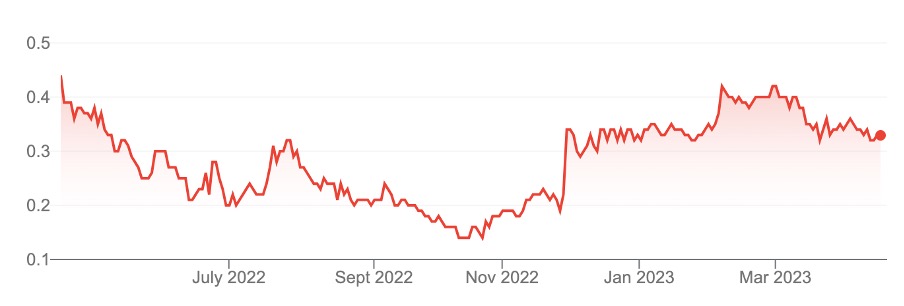If you want to find investment treasure in the small-cap trash, a good place to start is the aftermarket for Initial Public Offerings (IPOs) on the ASX.
All too often, IPOs are overhyped (and overpriced) in the lead-up to their listing. The IPO’s sponsoring broker spruiks the offer to clients and media cover the listing.
After a brief flurry of interest, the IPO underperforms after listing. Investors cut their losses and sell. The market quickly loses interest in the small-cap IPO.
Broking firms have little incentive to research the company. Lack of promotion contributes to low share liquidity in the stock and its underperformance.
The selling is compounded when escrow provisions are lifted a year or two after the listing, meaning seed and other early investors are free to sell their shares.
Remaining key shareholders pressure the Board to change management. The team that took the company to its IPO and listing moves on. The price falls further and the newly listed company is assigned prematurely to the small-cap graveyard.
Beneath the gloom, the company has made solid operational progress in its first two years after listing. The company achieved or even exceeded milestones outlined in its prospects, but few investors pay attention to the progress.
Of course, not every small-cap IPO follows this pattern. But I’ve seen this chain of events play out many times over the years and it is prevalent in this volatile market.
I never understand why some retail investors clamour for stock in overpriced and overhyped IPOs. Then, give up on the company after its valuation tumbles.
Even more perplexing is when the company is operationally stronger than it was at listing, having raised capital and got on with the job of growing the business. But its valuation is a faction of the company’s worth at IPO.
This is a tough market to be a small-cap IPO. Small-cap industrials, generally, have underperformed their large-cap peers over the past few years in a risk-averse market.
Within small caps, information technology and biotechnology companies have suffered from the broader sell-off in those sectors as interest rates rise.
I could go on with more small-cap doom, but every stock has its price. The small/micro-cap market is less efficient precisely because fewer investors look at it.
Here are two IPOs from the past 18 months. Both are from the healthcare services sector. Both suit experienced investors who understand the features, benefits and higher risks of investing in recently listed microcaps. Neither stock suits conservative investors.
- Microba Life Sciences (ASX: MAP)
The Brisbane-based company raised $30 million for its IPO in April 2022 – a good effort in a tough market for biotech companies and IPOs generally at that time.
The 45-cent issue price capitalised Microba at about $123 million at listing. After plumbing to 14 cents in late October 2022, Microba is back to 30 cents. The current market capitalisation is about $89 million.
Microba has been a long time in the making. The company’s co-founders, Professor Philip Hugenholtz and Professor Gene Tyson, spent over a decade developing Microba’s technology to measure the human-gut microbiome.Microba was formed in 2017 after acquiring intellectual property from The University of Queensland. The company wanted to list in 2020 but delayed the float when the COVID-19 pandemic erupted. That extra time helped Microba further ‘de-risk’ its technology and come to market as a more established company.
Microba has an interesting business model. It sells microbiome test reports to customers and healthcare practitioners worldwide; has a databank of over 1.2 million microbial genomes that pharmaceutical companies use for research; and Microba is developing several novel therapeutic assets to treat chronic diseases.
That makes Microba a part biotech/part data company, and a better prospect than many microcap healthcare companies. Interest in gut health has boomed and the global market for the emerging microbiome sector is estimated at almost US$5 billion.
Microba had some prominent institutional investors in its share register at listing – another good sign of due diligence. In November 2022, Sonic Healthcare acquired 19.99% of Microba for $17.8 million (at 26 cents a share).
That gives Microba a valuable strategic investor and a large distribution partner to deliver the company’s microbiome testing technology in seven countries.
Microba has also expanded its European markets through its distribution agreement with Synlab. Commercially, the company is stronger today than at listing.
Yet Microba has shed around a quarter of its value since listing. If the market doesn’t sufficiently recognise Microba’s progress and prospects, a predator will. The likeliest outcome is Sonic increasing its stake in the well-run Microba over time.
Chart 1: Microba Life Sciences

Source: Google Finance
- Artrya (ASX:AYA)
The Perth-based company raised $40 million through an IPO in November 2021 to develop its artificial-intelligence (AI) technology for cardiovascular disease.
Artrya was capitalised at $76.6 million upon listing, at the $1.35 issue price. After tumbling to 22.5 cents, Artrya is now worth $17.6 million.
Artrya this week reported $22.9 million of cash and an average monthly cash-burn of $1.3 million for the March quarter. At the current valuation, the market ascribes no value to Artrya’s technology, regulatory approvals or its progress since listing.
Artrya’s Salix product reports vulnerable plaque measures from a CCTA scan within minutes. Vulnerable soft plaques can rupture, causing clots that block arteries.
Artrya cites research that shows even a small plaque burden can lead to a significantly higher risk of heart attack. By using AI to scan medical images, Artrya’s technology slashes scan-to-report time, enabling clinicians to test more patients.
The technology has won some prestigious medical awards and is targeting a large global market in cardiac diseases and CCTA scans.
The technology has had regulatory approval in Australia, New Zealand, Europe and the UK. Artrya is targeting a submission to the US Food and Drug Administration by end-October 2023. If approved, Artrya will enter the lucrative US market.
In Australia, commercial release of the Salix Coronary Anatomy (SCA) product is planned for mid-2023. In the UK, Artrya has a four-year contract to supply the National Health Service Trust hospitals with SCA.
AI has a strong application to medical imaging, and I like Artrya’s software-as-a-service business model. Recent management and board changes are an opportunity for Artrya to refine its business model and build on the work of previous leadership.
Clearly, Artrya is ag punt. But it’s hard to reconcile the extent of its valuation fall with its progress since listing and its technology. As so often happens with thinly traded stocks, a small amount of selling can punish the share price.
The company needs to increase its news flow and get some quick wins. I doubt investors will pay much notice, even though Artrya is far cheaper today than it was at its IPO.
Prospective investors might wait for the selling momentum to ease. It could get worse for Artrya before it gets better, but the core technology might appeal to larger healthcare companies that see the potential of AI in cardiac disease.
Chart 2: Artrya

Source: Google Finance
Tony Featherstone is a former managing editor of BRW, Shares and Personal Investor magazines. The information in this article should not be considered personal advice. It has been prepared without considering your objectives, financial situation or needs. Before acting on information in this article consider its appropriateness and accuracy, regarding your objectives, financial situation and needs. Do further research of your own and/or seek personal financial advice from a licensed adviser before making any financial or investment decisions based on this article. All prices and analysis at 29 March 2023.

